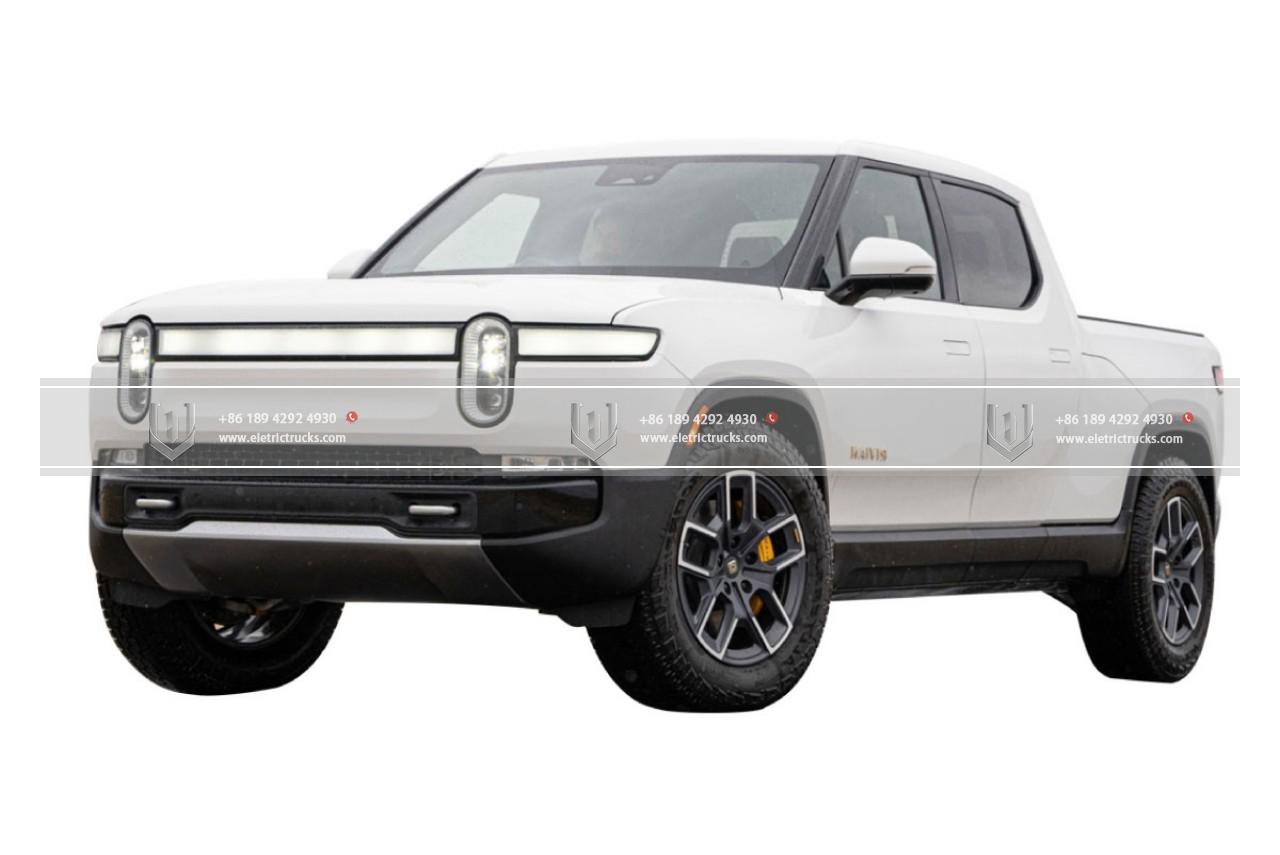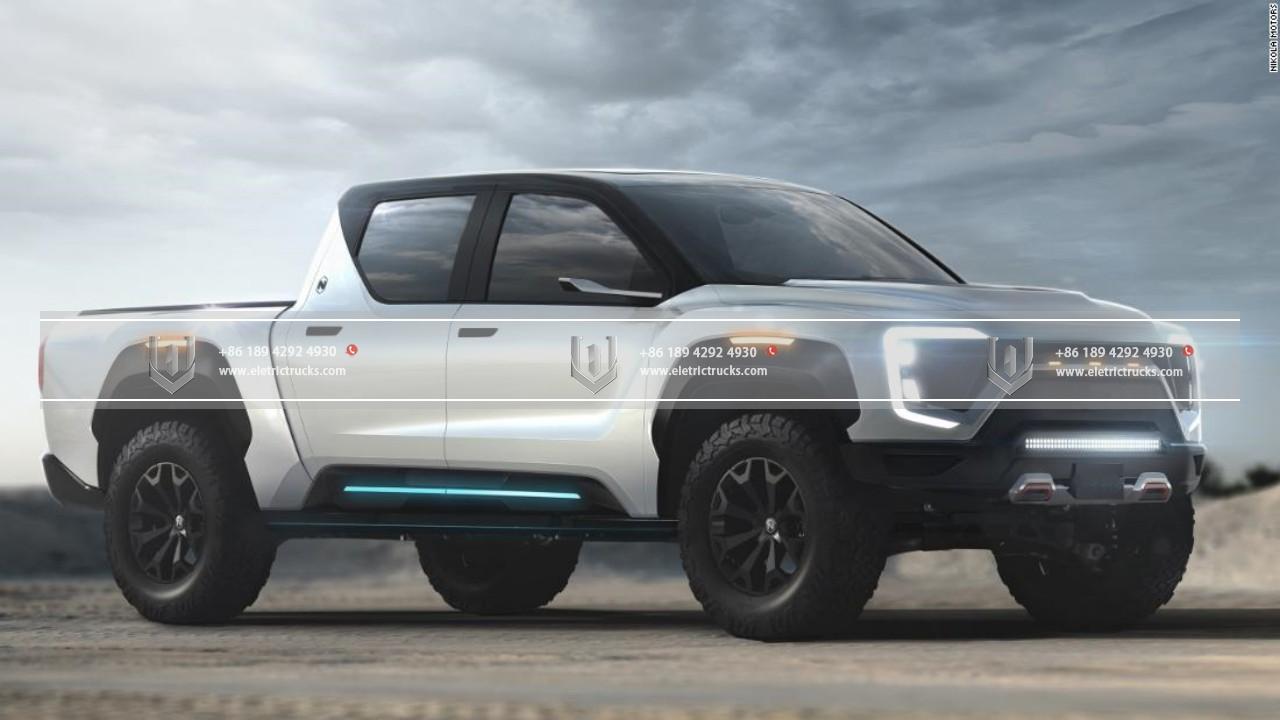전기 트럭 지식
Revolutionizing the Road: The Rise of Electric Trucks
The automotive industry is undergoing a transformative shift, with the rise of 전기 자동차 (EV) at the forefront of this revolution. While electric cars have been making waves in the market, another segment is quickly gaining momentum and promising to revolutionize transportation as we know it—the 전기 트럭.
최근 몇 년 동안, there has been a growing recognition of the environmental impact of traditional diesel-powered truck에스. These vehicles contribute significantly to greenhouse gas emissions, air pollution, and noise pollution. Electric truck에스, on the other hand, offer a sustainable and efficient solution to these problems. They run on electricity, producing zero tailpipe emissions, reducing carbon footprints, 그리고 improving air quality in urban areas.
One of the key advantages of 전기 트럭s is their 환경친화성. With governments and organizations worldwide pushing for stricter emission regulations, 전기 트럭s provide an opportunity for companies to meet sustainability targets. These vehicles can play a crucial role in reducing carbon dioxide emissions 그리고 combating climate change. By transitioning from diesel to 전기 트럭에스, companies can make significant strides toward a greener and more sustainable future.

뿐만 아니라, 전기 트럭s offer numerous operational benefits. One of the main advantages is lower operating cost에스. Electric powertrains have fewer moving parts, resulting in reduced maintenance 그리고 repair expenses compared to traditional combustion engines. 또한, electricity is generally cheaper than diesel fuel, translating into lower fuel costs for fleet operators. Over time, these cost savings can be substantial and contribute to improved profitability for businesses.
The rise of 전기 트럭s has also been driven by 배터리 기술의 발전. The development of high-capacity and fast-charging batteries has significantly improved the range and charging times of 전기 트럭에스. Previously, range anxiety was a common concern for commercial truck operators, but with the latest advancements, 전기 트럭s can now cover longer distances on a single charge. 게다가, the availability of a robust charging infrastructure, including fast-charging stations along major transportation routes, is further boosting the adoption of 전기 트럭에스.
Leading automotive manufacturers are recognizing the potential of 전기 트럭s and are investing heavily in their development. Companies like Tesla, Rivian, 그리고 Nikola are at the forefront of this revolution, introducing innovative electric truck models designed for various applications. These vehicles are not only efficient and sustainable but also offer impressive performance 그리고 towing capabilitie에스. 그만큼 Tesla Semi, for instance, boasts a range of up to 500 miles on a single charge and can accelerate from 0 에게 60 mph in just 20 seconds when carrying a full load.

구현 전기 트럭s goes beyond environmental benefits and operational efficiency. Electric trucks also have the potential to improve working conditions for truck driver에스. The quiet operation of 전기 트럭에스 reduces noise pollution, making long-haul journeys more comfortable and less fatiguing for drivers. 또한, 전기 트럭s offer smoother acceleration and instant torque, enhancing the overall driving experience and reducing driver fatigue. These factors contribute to increased driver satisfaction and improved road safety.
하지만, there are still challenges to overcome for the widespread adoption of 전기 트럭에스. One significant hurdle is the need for a comprehensive charging infrastructure. While progress has been made in developing charging network에스, it is crucial to ensure that charging stations are conveniently located and capable of handling the high power demands of commercial truck에스. Governments and private sector entities need to collaborate to invest in and expand charging infrastructure to support the growing fleet of electric trucks.
Another challenge lies in the weight and size of batteries. Electric truck batteries are bulky and heavy, limiting the payload capacity compared to traditional truck에스. Advancements in battery technology, such as solid-state batteries, could address this issue by providing higher energy density and reducing the size and weight of the battery packs. Continued research and development in this area will be crucial for overcoming these limitations.

처럼 전기 트럭s continue to gain traction, their impact extends beyond the transportation sector. The electrification of commercial fleets has the potential to drive innovation and create new business opportunities. It opens avenues for collaboration between automakers, energy providers, and technology companies to develop integrated solutions for charging infrastructure, energy management, and fleet optimization.
게다가, the adoption of 전기 트럭s aligns with the growing demand for sustainable supply chains. Consumers are increasingly conscious of the environmental impact of the products they purchase, and companies are responding by incorporating sustainability into their business strategies. Electric trucks offer a means to reduce the carbon footprint associated with the transportation of goods, enabling companies to meet their sustainability goals and gain a competitive edge in the market.
Another important aspect of the rise of 전기 트럭s is the impact on public health. Diesel trucks are a major source of air pollution, especially in densely populated urban areas. The emissions from these vehicles contribute to respiratory problem에스, cardiovascular disease에스, and other health issues. By transitioning to 전기 트럭에스, cities can significantly improve air quality, creating healthier living environments for their residents.

The benefits of 전기 트럭s extend to the global effort to combat climate change. The transportation sector is a significant contributor to greenhouse gas emissions, 그리고 reducing emissions from trucks is crucial for achieving climate targets. Electric truck에스, combined with renewable energy sources, offer a pathway to decarbonize the transportation sector 그리고 reduce reliance on fossil fuel에스.
하지만, for the widespread adoption of 전기 트럭에스, supportive policies and incentives are essential. Governments around the world can play a vital role in accelerating the transition by implementing measures such as tax incentives, grants, and subsidies for the purchase of 전기 트럭s and the development of charging infrastructure. 또한, regulations mandating emission standards and gradually phasing out diesel trucks can further drive the market towards electric alternative에스.
Education and awareness campaigns are also necessary to dispel myths and misconceptions surrounding 전기 트럭에스. Many fleet operators may still have concerns about the range, 충전 인프라, and initial investment costs. Providing accurate information, sharing success stories, and highlighting the long-term benefits can help alleviate these concerns and encourage more businesses to embrace 전기 트럭에스.

결론적으로, the rise of 전기 트럭s represents a paradigm shift in the transportation industry. These vehicles offer a sustainable and efficient alternative to traditional diesel truck에스, with environmental, economic, and societal benefits. With advancements in battery technology, 충전 인프라, and supportive policies, 전기 트럭s are poised to revolutionize the way goods are transported, creating a cleaner and more sustainable future. As we embark on this transformative journey, stakeholders across sectors must collaborate, innovate, and embrace the opportunities presented by 전기 트럭에스. Together, we can revolutionize the road and drive towards a greener and more prosperous tomorrow.
